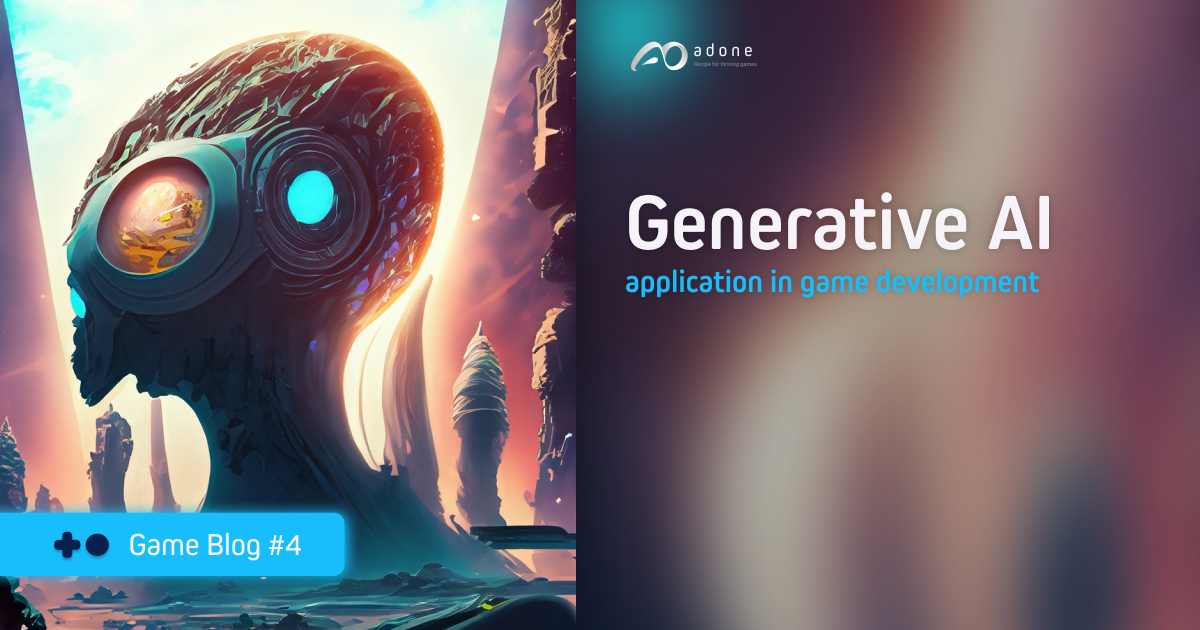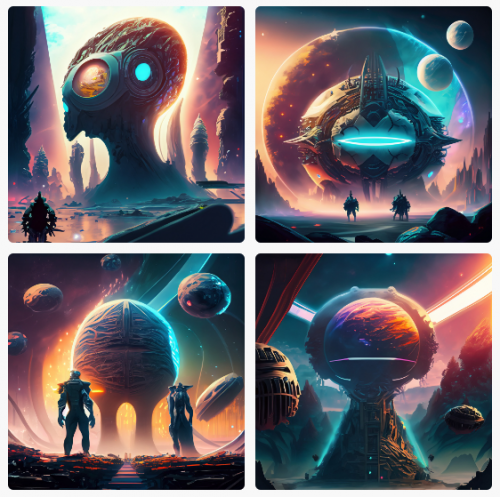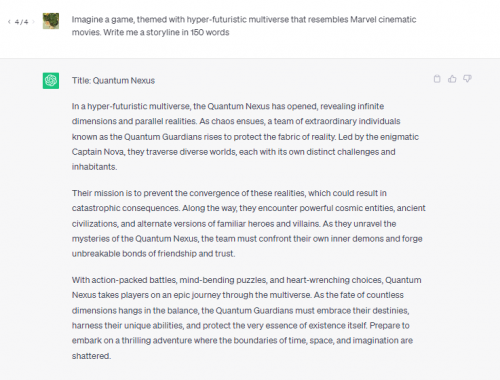Generative AI application in game development | Game blog #4
Jul 12, 2023

For many years, artificial intelligence (AI) has been a key component of video game development. In procedurally generated games (like roguelikes), AI is typically employed to produce in-game behavior in non-player characters (NPCs) or new landscapes. However, generative AI is a fresh weapon in the toolbox of game developers, opening up a number of applications for the technology from the very beginning of a game’s development.
Generative AI is rising in popularity, thanks in large part to tools like ChatGPT, Midjourney, etc. The games industry is no exception, the development of games and production of content have both started to incorporate generative AI techniques. GenAI is said to have the potential to transform the game creation process — but the technology also faces fierce critics.
What is the role of generative AI? Concept development and ideation
The creative process can be aided in a variety of ways by generative AI systems. Tools such as DALL-E, Midjourney, Firefly, for instance, make it possible to generate high-caliber artwork and other assets for games, in little to no time. They can produce these in mass and faster than a human could, just based on simple prompts. AI can also assist in creating diverse contents, from character designs, interactions and environmental aspects, reducing the time and resources required.
Imagine starting off your brand new game project, you get an idea for a title that features a hyper-futuristic multiverse that resembles those Marvel cinematic movies. Then you want to test the viability of this concept, thus need to develop some initial artwork and a simple storyline for a CPI test. This process will definitely require you to invest your time and effort, which would take several weeks to months. Also, you can’t afford to hire some professionals to speed up the process since you don’t have any budget. So instead of this, you seek assistance from free tools such as Firefly and ChatGPT. Boot them up, give them some simple prompts and in just a few seconds, you would get results such as these:
 |
 |
But at the same time, AI is horrible at creating a unique and artistic touch that humans bring to their work. Generative AI models have limitations in terms of detail, complexity or specific requirements. Furthermore, while they can generate content autonomously, genAI aren’t able to provide the level of fine-grained control that human creators have. In reality, these AI tools are yet to be able to produce consistent materials for you to turn them into in-game assets. More likely, if your CPI tests turn out great, you would want to do more with your characters, such as animation and making different variations of personalities, expressions, voicelines, outfits, poses, etc.
Who’s in charge? Human or AI?
Nonetheless, video game developers and AI companies seek to leverage these tools to streamline game development and produce them faster. They assert that it would automate some of the most laborious steps in game creation and assist in addressing the issue of video game crunch.
To develop an algorithm that can produce game assets consistently and of high quality, it is imagined that the application of genAI would look like this:
- First, pay providers to install and train a customized AI tool inside of your system.
- Work with the providers to prepare the instance for use using materials made by the art team. Then the art team will proceed to use this specially-taught AI to improve their work.
- Understand that the machine can only replace the less creative portions of the artists’ work. With the help of these technologies, you’ll be able to produce more work of a higher caliber with fewer employees (and at a cheaper overall cost)
This may pose job threats and take away many available career opportunities. Entry-level jobs and repetitive roles such as script writers, quality assurance testers, etc., are particularly vulnerable. But before we jump the gun, it’s important to note that AI is still getting things wrong. As OpenAI CEO Sam Altman put it in New York Magazine: “We are messing around with something we don’t fully understand. And we are trying to do our part in contributing to the responsible path through it.”
Will AI therefore replace human game developers? The answer is that the proper controls have to be put in place. Human creators continue to be in charge and play a crucial role in shaping the game’s vision, ensuring its quality and delivering innovative game experiences.
Reference: GamesBeat, The Verge
